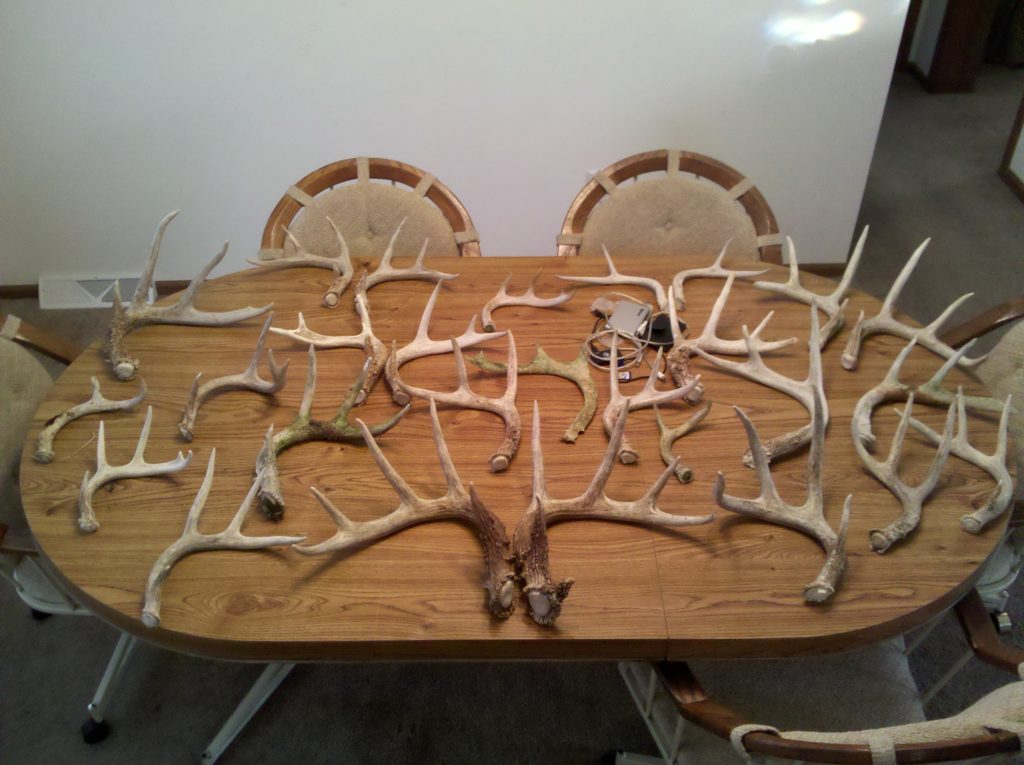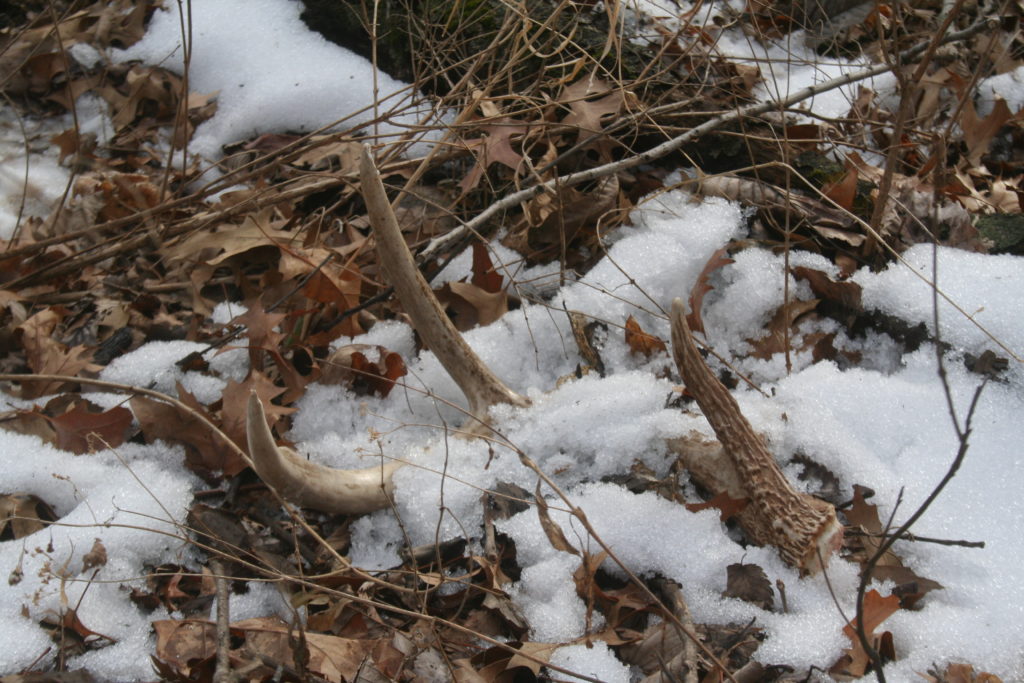The actual deer season may have come to a close across the states, but a new hunting season is just gearing up! Across the country, deer are starting to lose their antlers as we get nearer to spring. Yet, every year many hunters overlook or forego the wonderful opportunity to find shed antlers in late winter. Searching for and finding antlers offers a very fun experience for sportsmen everywhere, in addition to providing valuable scouting insight for the next fall. It also allows hunters a chance to bag a unique trophy that can be as rewarding to some as filling a buck tag earlier on in the season. The challenge of finding an antler is considered by many to be even more rigorous than harvesting a mature whitetail. If you want to find more antlers, here is some good advice to make your shed hunts more productive.
When to Look
There are several factors that go into deciding when you should look for sheds. Bucks drop their antlers when their testosterone levels begin to fall after the mating season, known by many as the rut. As a result, you can typically count on mid-February to mid-March as the best time to look. If you are able to run trail cameras on the property you shed hunt, that will help you best be able to determine when to begin searching. Depending on your geographic location, bucks may drop their antlers sooner or later. The reason for that is because the rut varies throughout the country. As a general rule of thumb, the later the rut goes in your respective geographic location, the later you can expect bucks’ antlers to drop. However, it is also important to be aware of other environmental factors in a given year like drought or poor nutrition, as those can also heavily influence how long a buck will hold his antlers. When there are other external factors such as those causing stress to your local deer herd, the bucks will tend to lose antlers faster.
If you are searching for sheds in public land, it is always best to get out early and often because there will be heavy competition. While some might not give up their secrets, it never hurts to ask around and see if anyone else is having luck with finding antlers so you’ll know when to get out and search.
When it comes to specific ground and sky conditions, I’ve had some great luck and also some really bad luck. My experience has shown that when it is a bright, sunny day, you will have a very tough time finding antlers in the heavily wooded areas. The forest floor becomes hard to decipher as the light comes down through the branches and creates thousands of small shadows everywhere you look, making it extremely difficult to spot a white antler. However, bright, sunny days can be productive if you are searching through large fields and field edges.

I was lucky enough to find this group of antlers over a two day stretch of cloudy skies.
My all-time best results have come on cloudy days. The forest floor is consistently lighted, making it less straining on your eyes to constantly be scouring the ground as you walk slowly through timber and fields. Rainy days can also be very productive because the leaves get matted down from the moisture and also become darker, causing the antlers to contrast more with the ground. The rain often times helps them to look much more white than they really are, which is helpful in spotting them on a dreary day.
If there is snow on the ground, you can pretty much expect it to be nearly impossible to find an antler unless a buck happened to drop it after the snow had fallen. Most antlers will be packed beneath the snow, leaving only small views of the point tips to be seen. Others might disagree, but I usually don’t spend much time looking in the snow.

I literally walked directly over this antler without seeing it because of the snow and ground cover. Luckily, Ryan Miloshewski was in tow behind me and spotted what I had failed to see.
Where to Look
When you are out searching for sheds, there are several key areas to concentrate your efforts on. If you have a major food source, like a feeder or food plot for instance, then start there. Walk in a circle around it and just keep moving in a wider radius. This tactic has worked extremely well for me in the past. Furthermore, deer often times will navigate around the edges of fields because they are very comfortable having the cover quickly available for escape. As a result, field edges, especially field edges to a major food source, can be very productive places to find antlers. As you walk the edge, don’t forget to look out into the open field as well.
Bedding areas are also a good place to look. Deep timber with thick undergrowth, small fields with tall, native grasses, and shallow, marshy areas all make for great bedding habitat and will most likely hold deer. If you locate a heavily used bedding area, be sure to walk the perimeter for any major trails as well. If you can find a transition corridor from the bedding area to a food source, you could be in for a really good day of shed hunting.
Many landowners and conservation parks practice controlled burning every year. If you can walk an area just after it is burned, you have a fantastic chance of finding antlers because there is less clutter on the ground to disguise them. The one downside to this is that any antler you do find may be slightly charred if it was subjected to direct fire.
It is also important to look near obstacles that deer are forced to jump or quickly maneuver around because those types of objects jar the antler loose off of a buck’s head. Classic examples are large logs, fence rows, and creeks. Every year I find multiple antlers lying along a barbed wire fence or just on the other side of a log as I step over it.
General Advice
In addition to where and when to look, I also have a few bits of general advice that will make you more successful. Make sure to wear safety glasses, preferably ones that are tinted yellow. Not only will that protect your eyes as you march through thick brush and low hanging branches, but it will also help your eyes to analyze the ground better and be less strained. Additionally, take extra care to walk slowly. It is incredibly easy to walk within yards of an antler and never see it. Trust me; I’ve learned this lesson all too many times. Be prepared to spend several hours when you search so that you don’t rush yourself as you walk through an area. Bringing multiple people along will help alleviate the chance of any missed antlers. I recommend walking parallel about 20-30 yards apart. Lastly, bring binoculars if you have some available. You are going to be doing a lot of walking on your search so there’s no need to walk another 50 or 100 yards to investigate what you think is a shed when you can just view it through your binoculars. You’ll be amazed at how many sticks and branches there are that you would have sworn to anyone were a massive shed.
Liked this story? Subscribe here for more updates!

